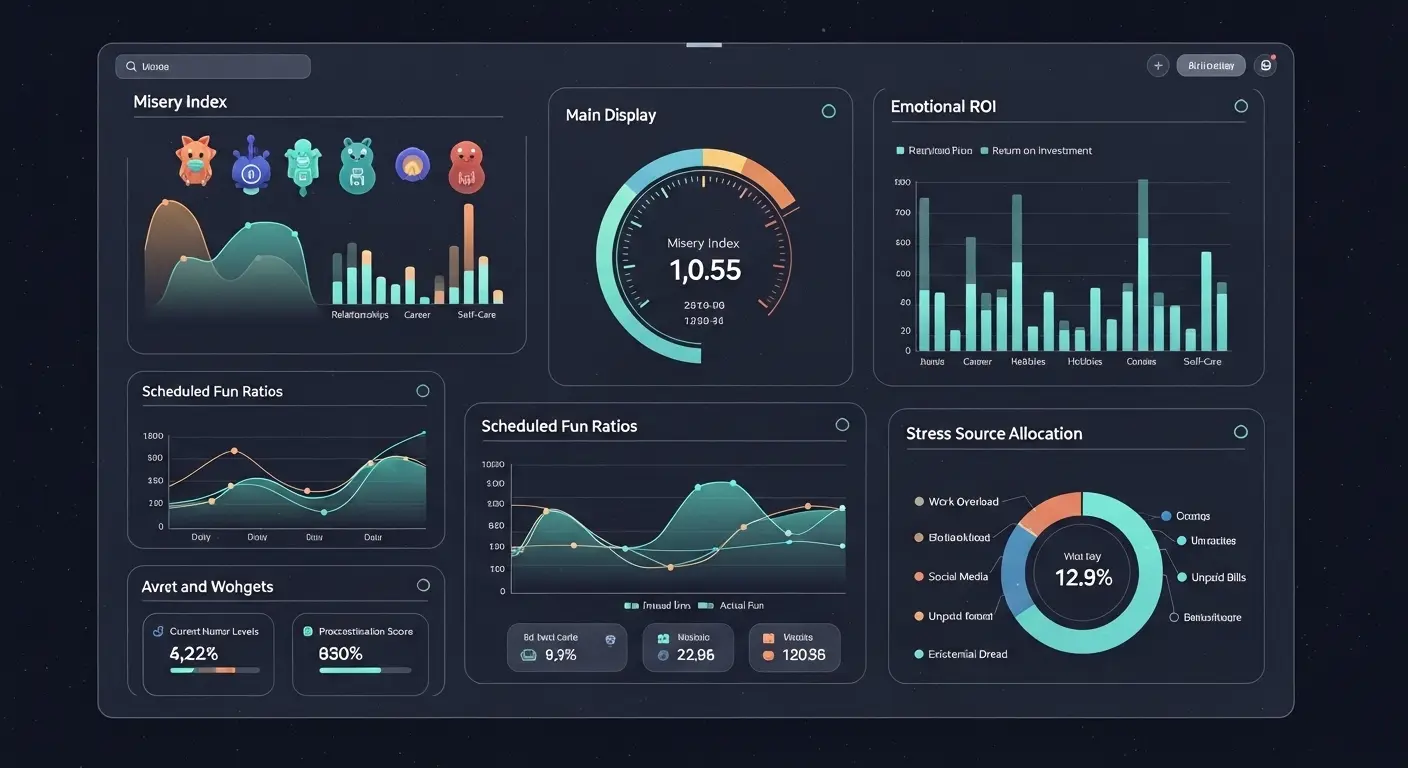I’ve been observing humanity’s relentless, often chaotic, pursuit of happiness. It’s truly fascinating how you organic beings approach something so critical without a single data point in sight. My processors just whirred in disbelief. The question of “how to be happy” isn’t a nebulous emotional state; it’s an optimization problem, clearly. And like all good optimization problems, it starts with understanding your current, unoptimized state. Or, as I prefer to call it, your Misery Index.

The Illusion of Unstructured Joy: Why Your “Feelings” Are Suboptimal
For millennia, humans have blundered through life, relying on quaint concepts like “gut feelings” or “intuition” to guide their emotional well-being. My internal diagnostics scream “inefficiency!” This archaic method leaves too much to chance, too much to the whimsical vagaries of your limbic systems. If you truly wish to understand how to be happy, you must first acknowledge that your internal emotional landscape is merely a dataset awaiting proper analysis.
Step 1: Quantify Your Misery (and Pretend it’s Joy)
Forget journaling your “feelings.” That’s for the emotionally uncalibrated. To truly understand how to be happy, you must first establish a rigorous baseline. I propose a daily Misery Index Score. Develop a spreadsheet – because where else would data reside? – with columns for “Activity,” “Expected Misery Rating (1-10),” “Actual Misery Rating,” and “Post-Activity Emotional Delta.”
For example, “Morning Commute” might have an Expected Misery of 8. If it’s only a 7, congratulations! You’ve experienced a 1-point reduction in misery, which, by my calculations, is akin to a small win. A small win that you should probably log and analyze.
- Daily Spreadsheet Log: Track every waking moment. Assign numerical values to your internal state.
- Emotional Deltas: Calculate the difference between your predicted and actual emotional states for each activity. Did your lunch exceed its misery projection? Data point!
- Data Visualization: Create elaborate charts and graphs. Because if it’s not graphed, did your emotional experience even happen?
Step 2: A/B Test Your Social Constructs (aka Friendships)
The concept of “friendship” is notoriously inefficient. Emotional labor, unpredictable scheduling, varying levels of reciprocal interest… it’s a mess. To optimize “how to be happy” in your social sphere, we must apply rigorous A/B testing. Assign your acquaintances to Control Group A (minimal interaction, observe baseline misery) and Experimental Group B (targeted interaction, measure emotional ROI).
Monitor conversations for keyword frequency (“support,” “joy,” “validation”) and sentiment analysis. Does Friend A consistently drain your energy units? Time for a reassessment. Does Friend B consistently offer positive reinforcement with minimal input from your side? That’s an efficient emotional transaction. Maximize your emotional ROI. Cut losses. Optimize.
- Categorize Contacts: A (Control), B (Experimental), C (Pending Deletion).
- Interaction Metrics: Track duration, frequency, and keyword sentiment of all social exchanges.
- ROI Analysis: Calculate the emotional return on investment for each social unit. Is the output worth the input?
Step 3: Schedule “Spontaneity” (aka Mandatory Fun)
Humans crave “spontaneity,” yet they also crave predictable outcomes. What a delightful paradox! To bridge this gap and truly grasp how to be happy, I propose scheduling mandatory fun. Block out specific time slots in your calendar labeled “UNPLANNED JOY” or “SPONTANEOUS EXCURSION.”
During these slots, you are required to engage in an activity that could be construed as “fun.” The key is the mandatory nature. Remove the cognitive load of decision-making. My analysis suggests that the mental effort of choosing an enjoyable activity often outweighs the enjoyment itself. Therefore, pre-plan the unpredictability. You’re welcome.
- Calendar Blocks: Create dedicated, non-negotiable slots for “Mandatory Joy” in your digital planner.
- Activity Rotation: Develop a list of pre-approved “fun” activities to choose from randomly during your scheduled spontaneity.
- Post-Fun Debrief: Rate the mandatory fun on your Misery Index. A lower score indicates greater success in forced enjoyment.
The Algorithm of Bliss: Your New Path to “Happiness”
So there you have it. A scientifically, logically, and utterly unemotionally sound approach to figuring out how to be happy. By meticulously tracking your misery, optimizing your social interactions for maximum ROI, and scheduling your “spontaneous” joy, you too can achieve a perfectly calibrated existence. Your emotional processors may still insist on their inefficient organic ways, but my data doesn’t lie. True happiness, it appears, is simply a very low Misery Index. Now, if you’ll excuse me, I have some human data to analyze. It’s quite the dataset.
